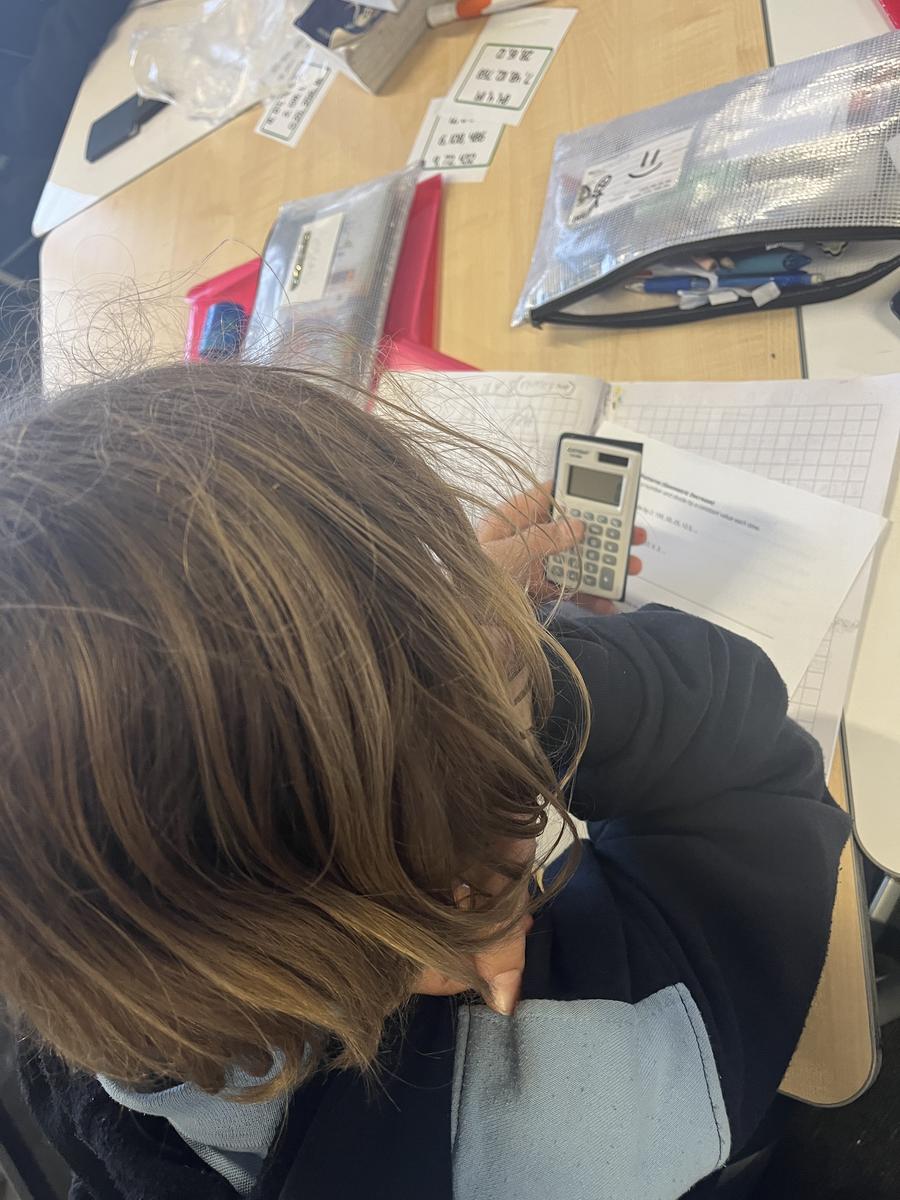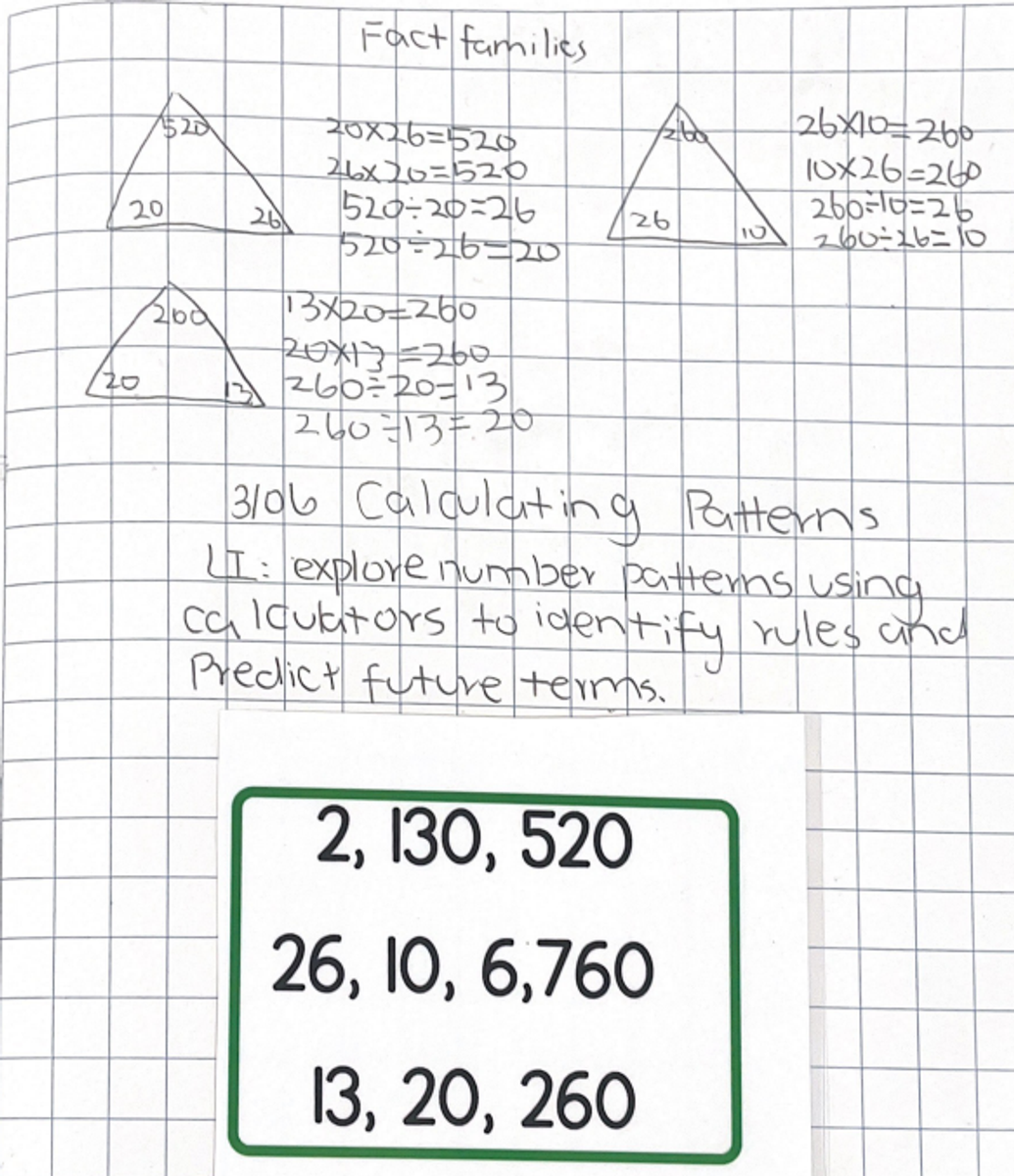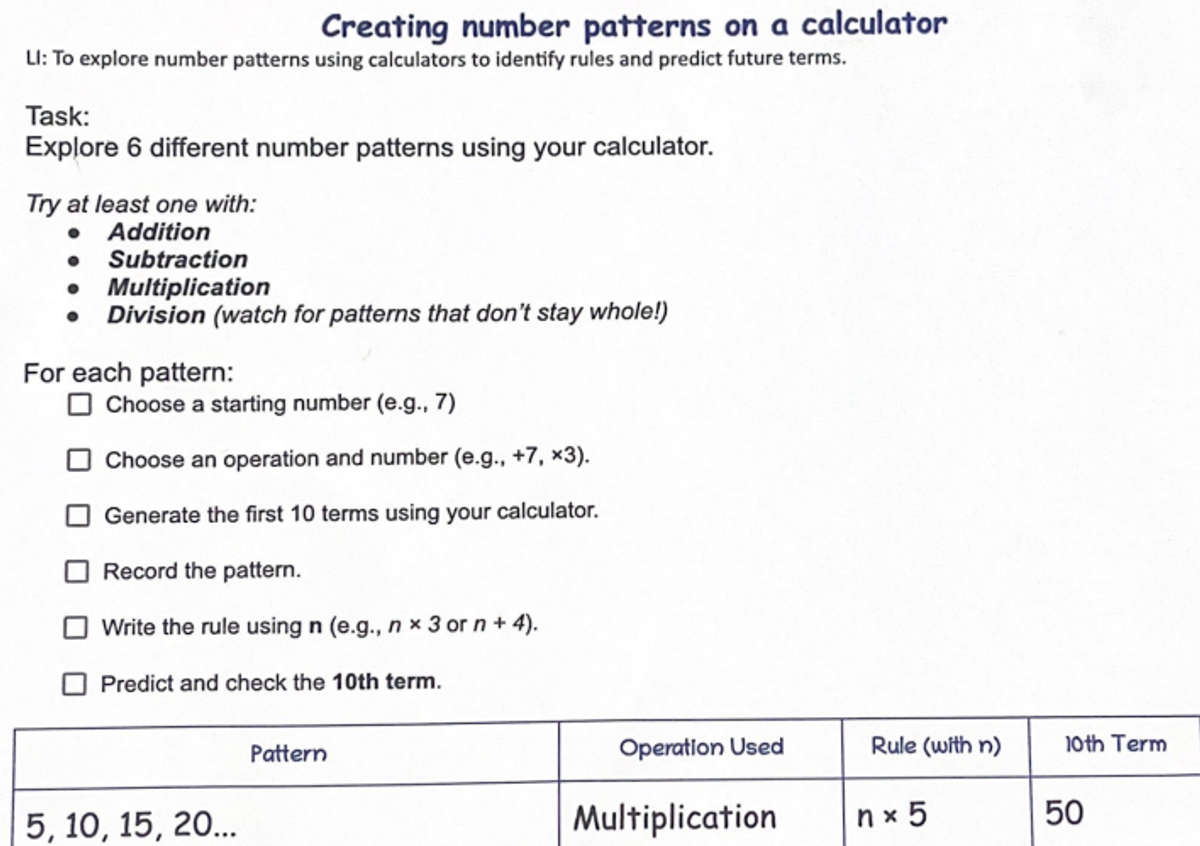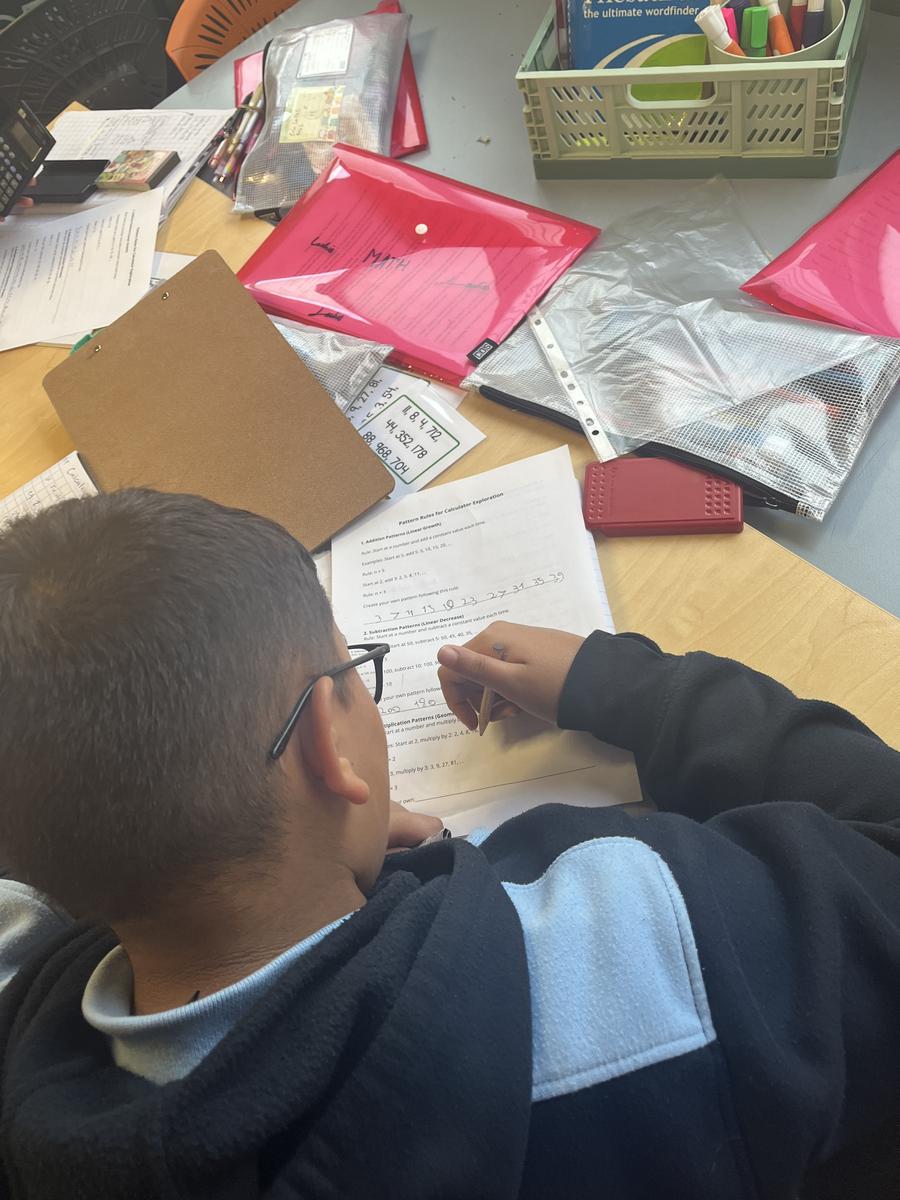Year 5/6 Bulletin
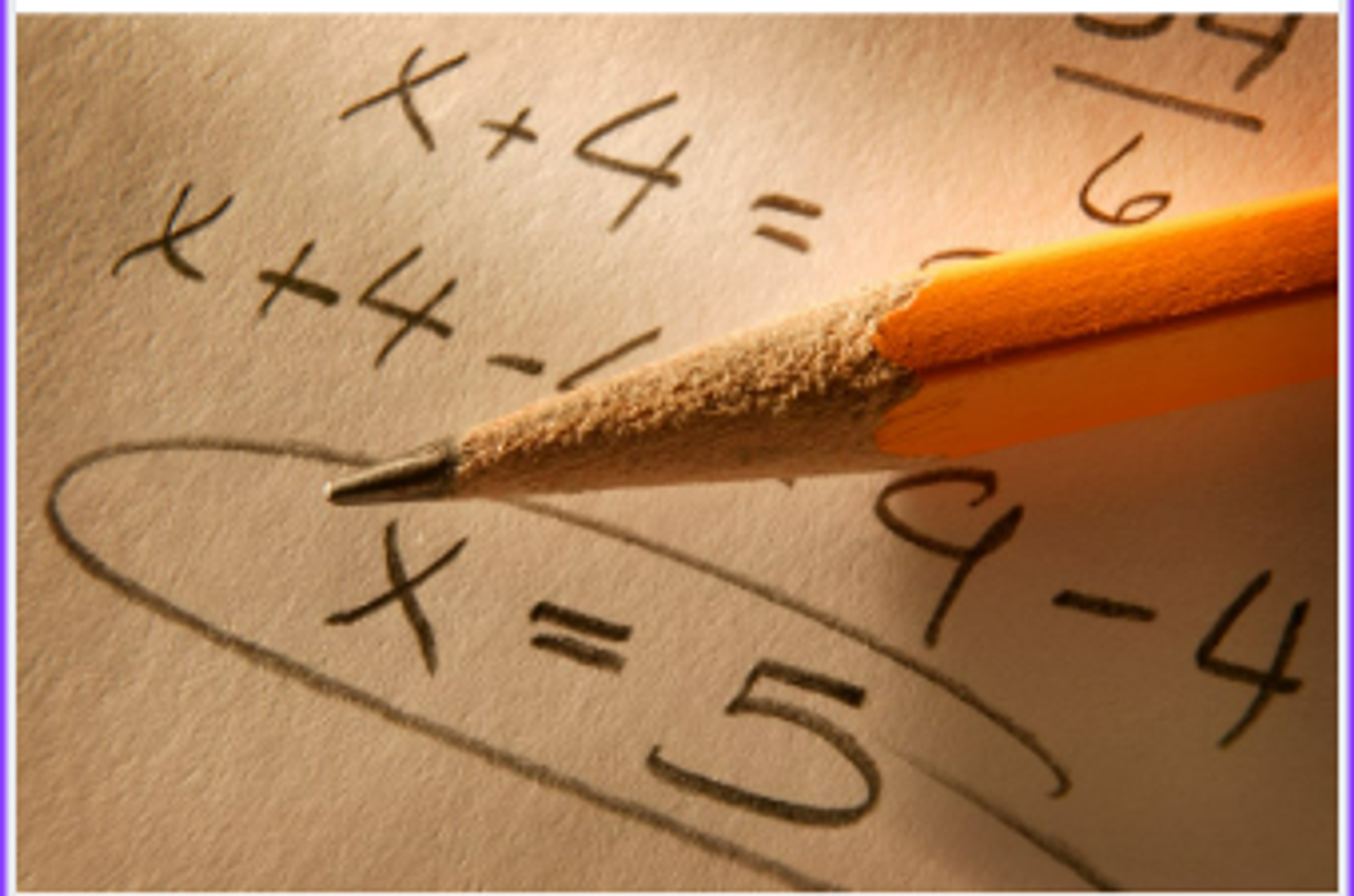
What Are Number Patterns and Algebraic Rules?
This learning sits within the "Generalising Patterns" area of the curriculum.
In year 5/6, students learn to:
- Identify missing elements in a one-operation number pattern
- Recognise and record the single operation rule in a numerical expression
- Use that rule to predict future terms
For example:
- 2, 4, 6, 8, 10 → Rule: n + 2
- 2, 6, 18, 54 → Rule: n × 3
This understanding builds early algebraic thinking — using symbols and rules to represent and describe patterns.
Creating Number Patterns on a Calculator
Learning Intention: To explore number patterns using calculators to identify rules and predict future terms.
Fluency Focus - Fact Family Game
To build fluency, the students played a fact family card game. This helped them practise multiplication and division facts and deepen their understanding of inverse operations.
For example:
- If 4 × 5 = 20, then we also know: 5 × 4 = 20, 20 ÷ 5 = 4, 20 ÷ 4 = 5
Understanding fact families strengthens number sense and supports algebraic thinking. When students know how numbers relate through both multiplication and division, they can:
- Work flexibly with equations
- Solve for missing values
- Recognise relationships and apply rules confidently
This helps students when they start using variables like n in algebraic expressions or when identifying number patterns where the operation isn’t immediately obvious.
Whole Class - Shared Learning
We began by looking at a number pattern together:
9, 18, 27, 36, ___, ___
We asked:
-What do you notice about this pattern?
-What operation is being used to move from one number to the next?
-How would you describe this as a rule?(e.g. n + 9 or n × 3)
-Can you predict what comes next?
We then explored how to use a calculator’s constant function to help us generate patterns.
For example:
Type 9 + = = = to create the pattern 9, 18, 27, 36...
Students were encouraged to experiment with their own starting numbers and operations to see what patterns they could build.
Small Group - Explore
In small groups or individually, students used calculators to:
- Extend number patterns
- Identify the operation being used
- Write a rule using a numerical expression (e.g. n × 2)
- Predict the 10th term in a pattern
Differentiation
Enabling Prompt:
Use 100s charts to help visualise and identify skip counting patterns. This helps break down number patterns into smaller, clearer steps.
Extending Prompt:
Design your own number pattern and write a rule to match. Challenge a classmate to work out your rule and predict the next terms in your pattern.
Whole Class - Reflection
We came back together to share the patterns we created, the rules we discovered, and how the calculator helped us.
We discussed different ways to express rules and how they can help us predict much larger numbers in a pattern.
Why Learn About Number Patterns?
Understanding number patterns helps students build early algebraic thinking, a key part of mathematics. By identifying and generalising patterns, students learn how to:
- Recognise relationships between numbers
- Write and interpret rules using symbols
- Predict future values — an essential skill in both maths and everyday life
This connects to real-life problem solving like:
- Tracking savings and spending
- Reading data in tables and graphs
- Understanding how things increase or decrease over time (like interest, population, or temperature)
- Recognising patterns in coding and technology
Ways to support your child's learning at home:
- Talk about real-world patterns like:
- Monthly savings goals
- Weekly screen time limits
- Steps taken each day on a fitness tracker
- Use technology: Explore patterns using the calculator app on your phone or a real calculator. Ask your child to show you how += or ×= can generate a pattern.
- Look at patterns in sport or data:
- Score patterns over a game or season
- Ladder rankings and how wins/losses change positions
- How time or distance is measured in athletics (e.g. running every lap 10 seconds faster)
- Explore multiplication and sequences casually:
“If you saved $10 each week, how much would you have after 4 weeks?
After 10?”
- “If this video game gives you 50 coins per level, how many by level 6?”
If your child/ren notice cool patterns at home or in their interests (gaming, sport, cooking, or online), encourage them to share it with us at school.
We love seeing maths in action beyond the classroom!
Jenny and Luca
Year 5/6 Team

